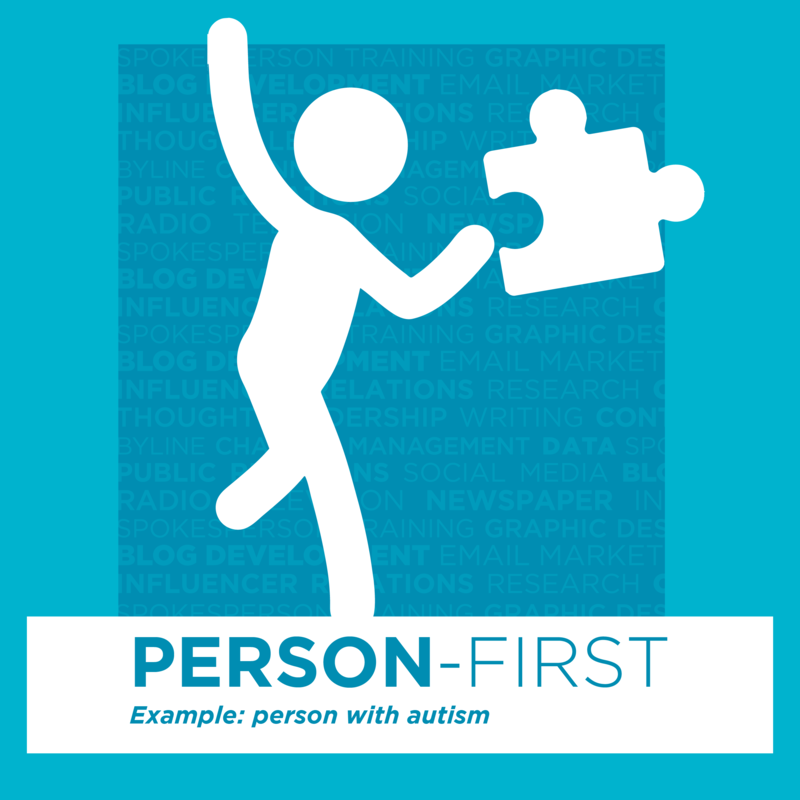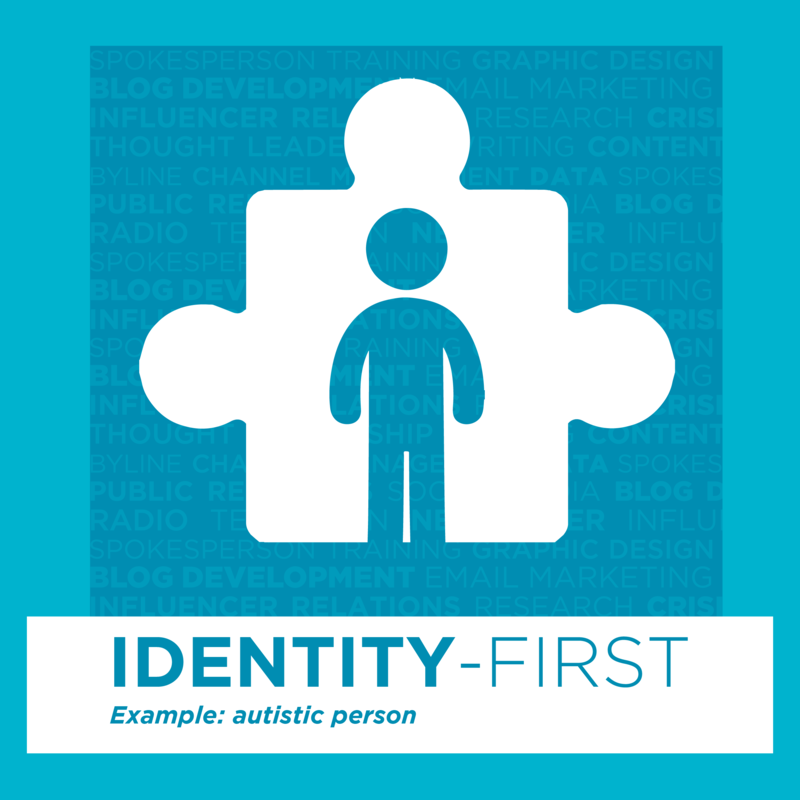Looking for our Checklist for Inclusive & Accessible Communications? Scroll down to download it now!
As a professional communicator, you wield a lot of power. The stories you tell — and how you choose to tell them — set the tone for your brand, shaping how it is perceived by external stakeholders and how others within your organization talk about it.
Indeed, it is because PR pros often find themselves in these gatekeeping positions that it is vitally important to learn the best practices of inclusive and accessible communications. After all, if you’re the chief communicator for your brand and you’re not doing it right, who will?
Here are a few essential elements of inclusive and accessible communications to keep in mind, adapted from Cincinnati PRSA‘s recent “Accessibility and Inclusion: Communications and Programming Best Practices” webinar:
#1: Person-First vs. Identity-First Language

One of the most overlooked elements when communicating for, with, and about people with health conditions and disabilities is the decision to use either person-first language or identity-first language.
As the name implies, person-first language introduces a person before using any terms to describe them so that they are not exclusively defined by their condition or disability. Examples of person-first language include:
- person with a disability;
- person who is visually impaired;
- person who is in recovery from a substance abuse disorder.

Alternatively, identity-first language acknowledges that a given condition or disability is often an integral part of a person’s identity, and should be emphasized instead of minimized. Examples of identity-first language include:
- an autistic person;
- the Deaf community;
- a wheelchair user.
Which should you use in your brand communications? There isn’t an easy answer. While person-first language became standard with the passing of the Americans with Disabilities Act in 1990, there are many who now prefer to use identity-first language as a way of embracing their disability or condition.
If you’re writing a press release or social media post about a specific person, the best approach is to ask them which they prefer. When writing more generally, it’s helpful to draft a disclaimer statement about your language choices, which can be included on your brand’s website and social media profiles.
For example, our client Easterseals Redwood uses the following statement:
The disability community is rapidly evolving to use identity-first language in place of person-first language because it views disability as being a core component of identity, much like race and gender. Preference can vary for many reasons, and some members of the community, such as people with intellectual and developmental disabilities, prefer person-first language. In our communications, we are moving toward using identity-first language while striving to ensure we respect the wishes of the people being represented.
#2: Design with Accessibility in Mind
All too often, accessibility is viewed as an afterthought instead of as a key component of communications. However, in order to make your communications truly accessible, it is best to take accessibility into account through every step of the process.
For example, if you’re hard at work designing a brochure promoting your organization, it’s much easier to ensure the color contrast of your design meets the required ratio of 4.5:1 (as established by the Web Content Accessibility Guidelines) before you’ve completed the project, instead of having to redo it later.
Similarly, when posting any kind of image to your brand’s social media channels, you should always include alt text to ensure the post is easily accessible by all. In case you’re not familiar, alt text is written copy that accompanies an image on social media or your website which describes what is happening in the visual. Alt text ensures that visually impaired users will still be able to access your content via screen readers — and it helps to boost your SEO, too!
TIP: Just getting started with alt text? We’ve got you covered! Check out our other blog posts to learn “The Importance of Alt Text for Your Organization” and “Alt Text for Images: A How-To for Websites and Social Media.”
#3: Harness the Power of Headlines for Good
While it’s a PR pro’s dream to have a captive audience full of people who will read an entire story, we know that isn’t the case. In fact, it’s estimated 8 out of 10 people will read the headline of your piece, but only 2 of 10 will go on to read the full story.
With that in mind, take extra care to ensure the inclusive language you’re using within your brand communications is also reflected in the headlines of press release, blog posts, and beyond. For example, avoid headlines about a person “overcoming” a disability, as it usually factors involving accessibility and (lack of) accommodations that need to be overcome, not the disability itself.
It’s also a good idea to pause and reflect whether the disability or condition needs to be mentioned in the headline (or even in the story itself) in the first place. If a story is only a good story because it involves someone with a disability or condition, it may not be the best fit to use in your brand communications.
Learning how to write inclusive and accessible communications can be challenging, but it is important work to do for any professional communicator. More than anything else, stay adaptable and willing to learn; your communications — and your brand — will be much better off for it.
Always keep inclusive and accessible communications top of mind by downloading our Checklist for Inclusive & Accessible Communications now:
Checklist for Inclusive & Accessible Communications
Send download link to:
Interested in learning more about inclusive and accessible communications? Check out:


